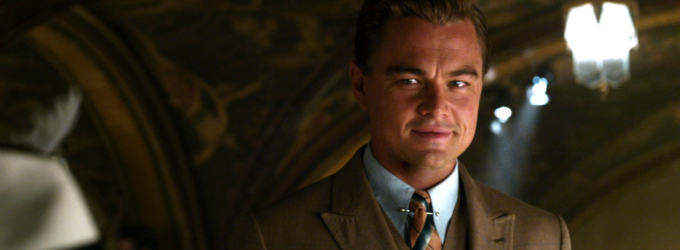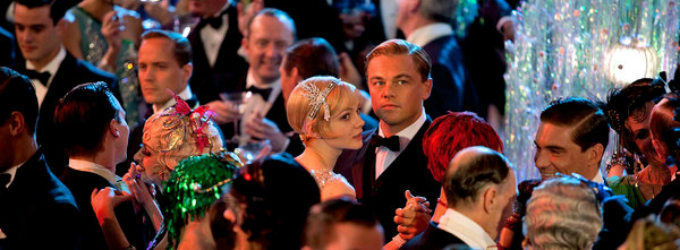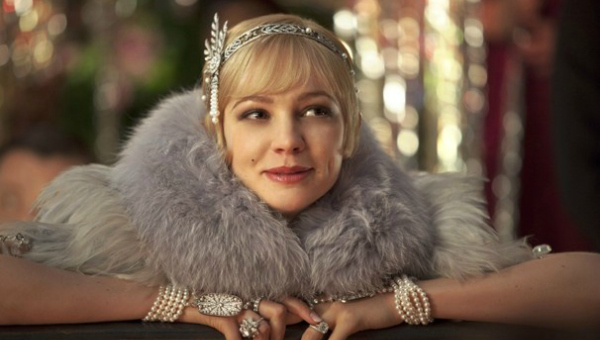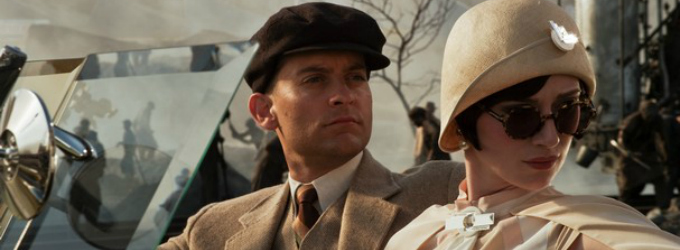 Once a generation, or so, there is an overwhelming desire from the film industry to transport F. Scott Fitzgerald’s timeless novel, THE GREAT GATSBY, to the big screen. This adaptation sees Leonardo DiCaprio take on the challenging task of portraying the enigmatic Jay Gatsby, with Carey Mulligan as his lost love, Daisy Buchanan, and Tobey Maguire as the author’s surrogate, Nick Carraway. Hindered immediately by the weight of expectation, Baz Luhrmann is the latest in a long line of filmmakers to misjudge the balance of THE GREAT GATSBY.
Once a generation, or so, there is an overwhelming desire from the film industry to transport F. Scott Fitzgerald’s timeless novel, THE GREAT GATSBY, to the big screen. This adaptation sees Leonardo DiCaprio take on the challenging task of portraying the enigmatic Jay Gatsby, with Carey Mulligan as his lost love, Daisy Buchanan, and Tobey Maguire as the author’s surrogate, Nick Carraway. Hindered immediately by the weight of expectation, Baz Luhrmann is the latest in a long line of filmmakers to misjudge the balance of THE GREAT GATSBY.
The biggest problem with Luhrmann’s film isn’t one that he can particularly be blamed for. It is simply its association with the definitive great American novel. Much of the criticism that the film will encounter will be based on how it interprets the book. Jack Clayton’s version from the 1970s was, if anything, too faithful: copying and pasting vast quantities of the book into the script, and eventually underplaying the party elements to such an extent that the Jazz Age never quite felt tangible enough. Luhrmann, however, has taken the opposite approach, creating a lurid, garish Jazz Age that is so completely over the top from start to finish that it ends up feeling somewhat superficial.
… the screen is constantly and exhaustingly saturated with colour, energy and stylised action…
Set in the midst of the unstable, post-war, prohibition era that eventually birthed the Great Depression, Fitzgerald’s Gatsby is a shining beacon of hope to his period: a face to attach to the American Dream that suggests that anything is possible, that any man can better himself if he is prepared to work for it. The great tragedy of Gatsby is that he is in fact entirely a façade, and his ‘new money’ is sourced illicitly. If you peel away the mask behind which he hides, he is as close to collapsing in upon himself as the society which he embodies.
In the current generation of actors it is hard to imagine anyone as qualified as DiCaprio for the role, and overall he is a very impressive Gatsby. The combination of Romeo-esque, boyish charm and a fantastic array of suits designed by the Brooks brothers make the mask of Jay Gatsby an effective one, and DiCaprio’s well documented abilities when it comes to unhinged, disturbed young men allow Gatsby’s collapse to provide the film with its most impressive scenes.
Beyond Gatsby himself, the supporting cast are mixed. Tobey Maguire spends the film wandering from scene to scene looking infuriatingly dumbstruck, as if he is completely unaware how he’s come to be in the film. Whilst this does, in fairness, reflect the book, in that he is only really present for the sake of a narrator, it doesn’t translate as well on screen as it does in text. Second to Gatsby, the film hinges on the performance of Carey Mulligan as Daisy. She is the character at the centre of the film’s tragedy, both its victim and its cause; she does a commendable job in portraying the side of Daisy that doesn’t really warrant the love she receives. Unfortunately, however, she’s never quite as enchantingly charming as her textual equivalent.
Myrtle (Isla Fisher), is one of the more unusual performances of the film. She is depicted as a caricature of a woman, overly made up and strangely hyperbolic. Her husband George (Jason Clarke), and Tom Buchanan (Joel Edgerton) are two of the stand out performances. Clarke plays his George in a similarly excessive manner to Fisher, but where she seems slightly too over the top, he is perfectly in tune with his Valley of Ashes surroundings.
The fairest way to view the film is to remove it from its relationship to the text.
The film’s soundtrack, as with any Baz Luhrmann film, is a particular talking point. Produced by Shawn ‘Jay-Z’ Carter, it plays fantastically well as an album, but within the film it feels jarring and frequently unnecessary, as if Luhrmann felt obliged to incorporate every song into the film no matter how much they disturbed the audio-visual relationship. There are frequent moments where characters seem unsure whether they should be lip synching or not, and overall the soundtrack is mismanaged, creating the effect of music and visuals in competition with one another for the spotlight, rather than as one seamless relationship.

The trouble with adapting GATSBY is that its power and enduring significance are held in the words of the story. The manner in which Fitzgerald describes things, the way characters move and feel and think, is appealing and immersive in a way that has to be read. In text it feels enthralling and evocative, but the only way to express this in film is to have our narrator spoon feed us the subtexts in condescending narration. There is an argument, then, that Luhrmann was always going to fail to live up to the book, because after nearly ninety years it has been immortalised to such a point that no film could ever do it justice. The fairest way to view the film is to remove it from its relationship to the text. Luhrmann has created a GATSBY where everything is in excess. The screen is constantly and exhaustingly saturated with colour, energy and stylised action, from SPEED RACER driving scenes shot in swooping, zooming, headache-inducing 3D to ten minute long Moët fuelled party sequences.
Luhrmann’s New York offers a dynamic cross-section of style, class and ethnicity. He manages to incorporate the sense of a failing American Dream that is so integral to the novel, but where the novel is punctuated subtly with these undertones, Luhrmann showers them in glitter, frames them with CGI fireworks and bangs you repeatedly over the head with them. Overall, the film looks fantastic. Although hindered by unnecessary 3D, it’s full of commendable performances and choreographed party sequences. Luhrmann incorporates a tonal change to a tense melodrama for the final act that comfortably does the book’s denouement justice, but unfortunately, it’s still difficult to not come away feeling a bit disappointed, underwhelmed, and yearning for Fitzgerald’s original text.
httpvh://youtu.be/rARN6agiW7o


